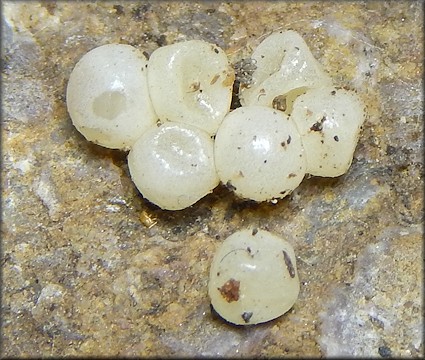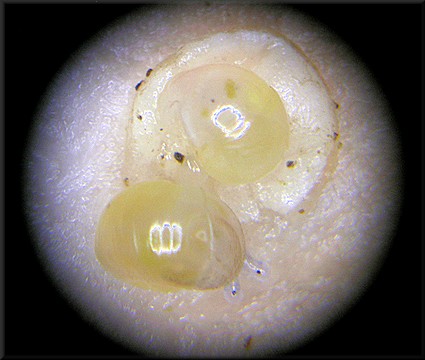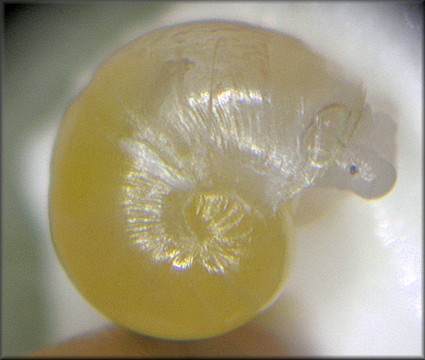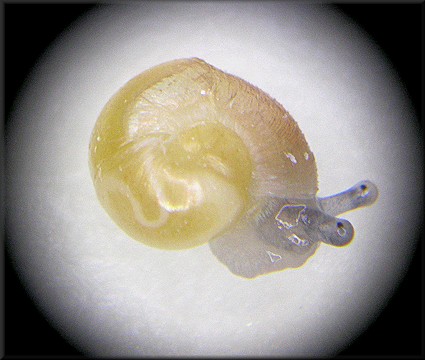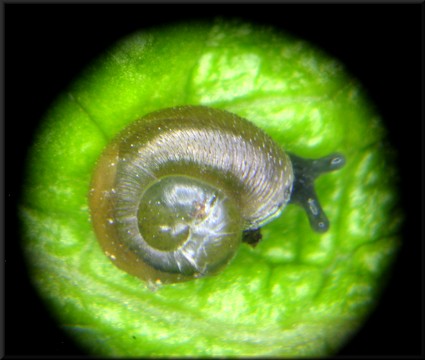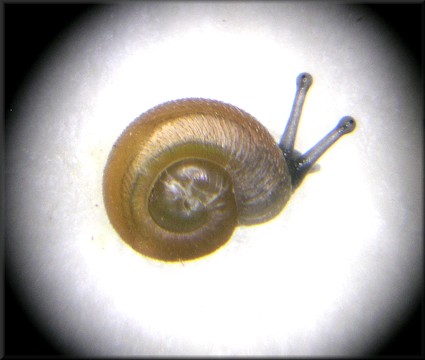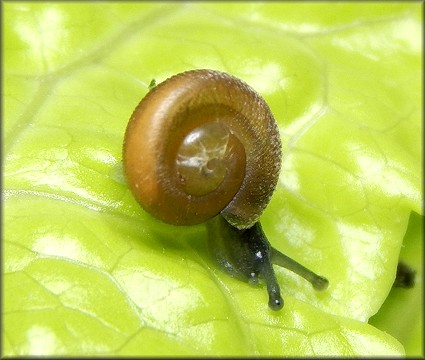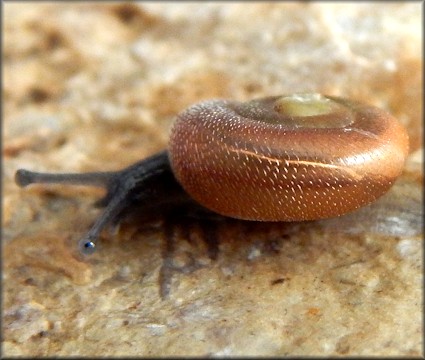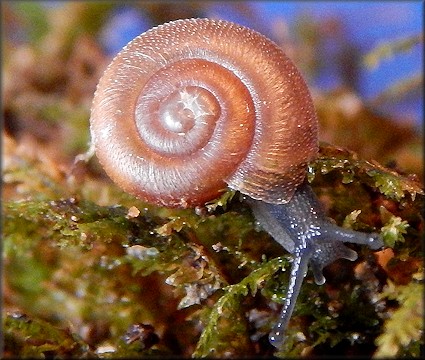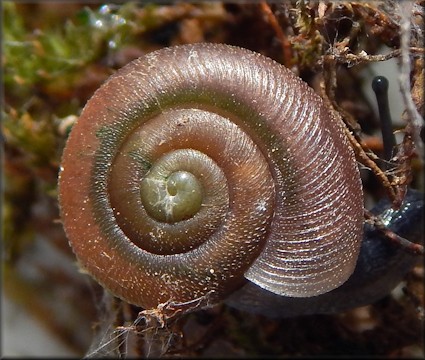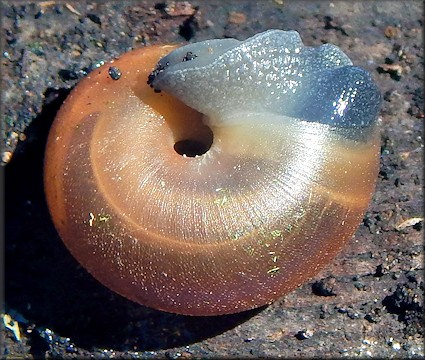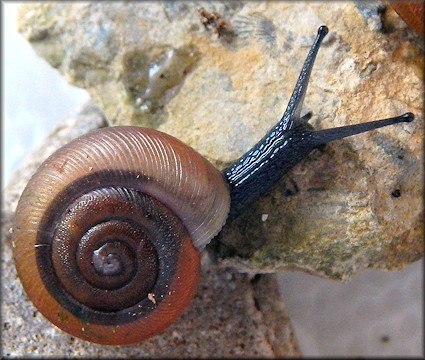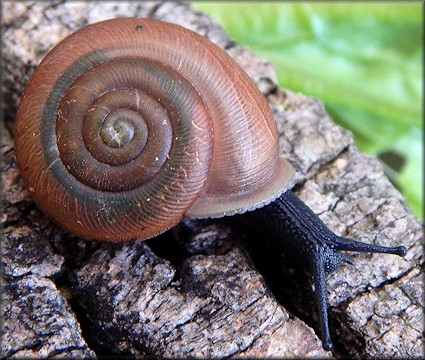|
Triodopsis tennesseensis (Walker and Pilsbry, 1902) Budded Threetooth - From Egg To Adult |
|
|
On January 17, 2020 an egg clutch of seven ova was found inside a
terrarium with two individual T. tennesseensis from
Nelson Co. KY. On January 28 a single specimen hatched followed by
a second individual two days later. The remaining five ova did not
contain embryos. The second specimen's shell was slightly damaged
at the time of hatching. The newly hatched juvenile was able to
make necessary repairs within two days. Its older sibling never
straying very far, more often than not, in direct contact. The
following images follow the weekly development of the second
individual to maturity. The shell damage is clearly visible near
the apex. Of interest related to the laboratory raised specimens are shell characteristics often hard to detect in both live and dead collected shells. Triodopsis tennesseensis was formerly placed in the Triodopsis tridentata group (Pilsbry, 1940: 797). Pilsbry discussed the size of both the shell and umbilicus and dentition present. He does not linger on the subject of exterior shell characteristics but does mention "Under the microscope it shows many minute papillae among the striae." Within days the papillae began forming. The axial striae are weak then becoming more pronounced as the snail grows. The papillae remain prominent throughout development. This process is better described by Vagvolgyi, 1968 in the monograph Systematics and Evolution of the Genus Triodopsis (Mollusca: Pulmonata: Polygyridae). "Embryonic whorl 1.4-1.5, with dense striae and long transverse granules; two subsequent whorls almost exclusively with granules, then striation becoming more pronounced, 3-4 low to moderate high striae per millimeter on the last whorl; intervals between striae with granules; incised spiral lines appearing after breakage...." Pilsbry, H.A., 1940. Land Mollusca of North America (north of Mexico) vol. 1 part 2. Academy of Natural Sciences, Philadelphia. vi + 575-994 + ix. 1 Aug. <http://babel.hathitrust.org/cgi/pt?id=uc1.31822000620245;view=1up;seq=7> Vagvolgyi, J., 1968. Systematics and Evolution of the Genus Triodopsis (Mollusca: Pulmonata: Polygyridae). Bulletin of the Museum of Comparative Zoology. Vol 136(7):145-254. 12 Feb. <http://biodiversitylibrary.org/page/4776194> |
|
|
The images below pertain to hatchling number two which hatched on January 20, 2020. The snail hatched with a broken shell and looked perilously frail. |
|
|
Egg clutch 1/28/2020 |
Number two at two hours. Number one (two days) stayed on or near the specimen for the first two days. The snail hatched with a visible broken shell on the left hand side. |
|
|
|
|
Close up of irregular striae forming at three days |
Four days old with remarkable shell repairs |
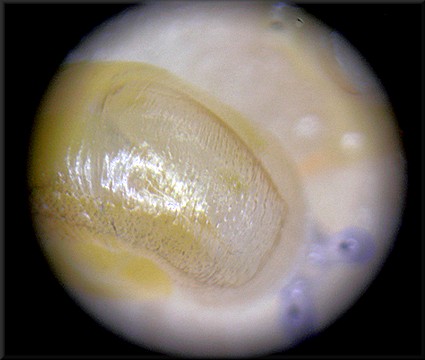 |
|
|
One week old (2.6 mm.) |
Two weeks old (3.0 mm.) |
|
|
|
|
Three weeks old (3.6 mm.) |
Four weeks old (4.3 mm.) |
|
|
|
|
Five weeks old (4.8 mm.) |
Six weeks old (ca. 6.4 mm.) |
|
|
|
|
Seven weeks old (8.02 mm.) |
Eight weeks old (9.84 mm.) |
|
Sibling (hatched three days earlier) measured 13.04 mm. |
|
|
|
|
|
Nine weeks old (11.91 mm.) |
Eleven weeks old (14.29 mm.) |
|
Sibling measured 14.42 mm. |
Sibling measured 17.80 mm. with fully developed lip |
|
|
|
|
Twelve weeks old (16.89 mm.) |
|
|
Sibling measured 17.93 mm. |
|
|
|
|
